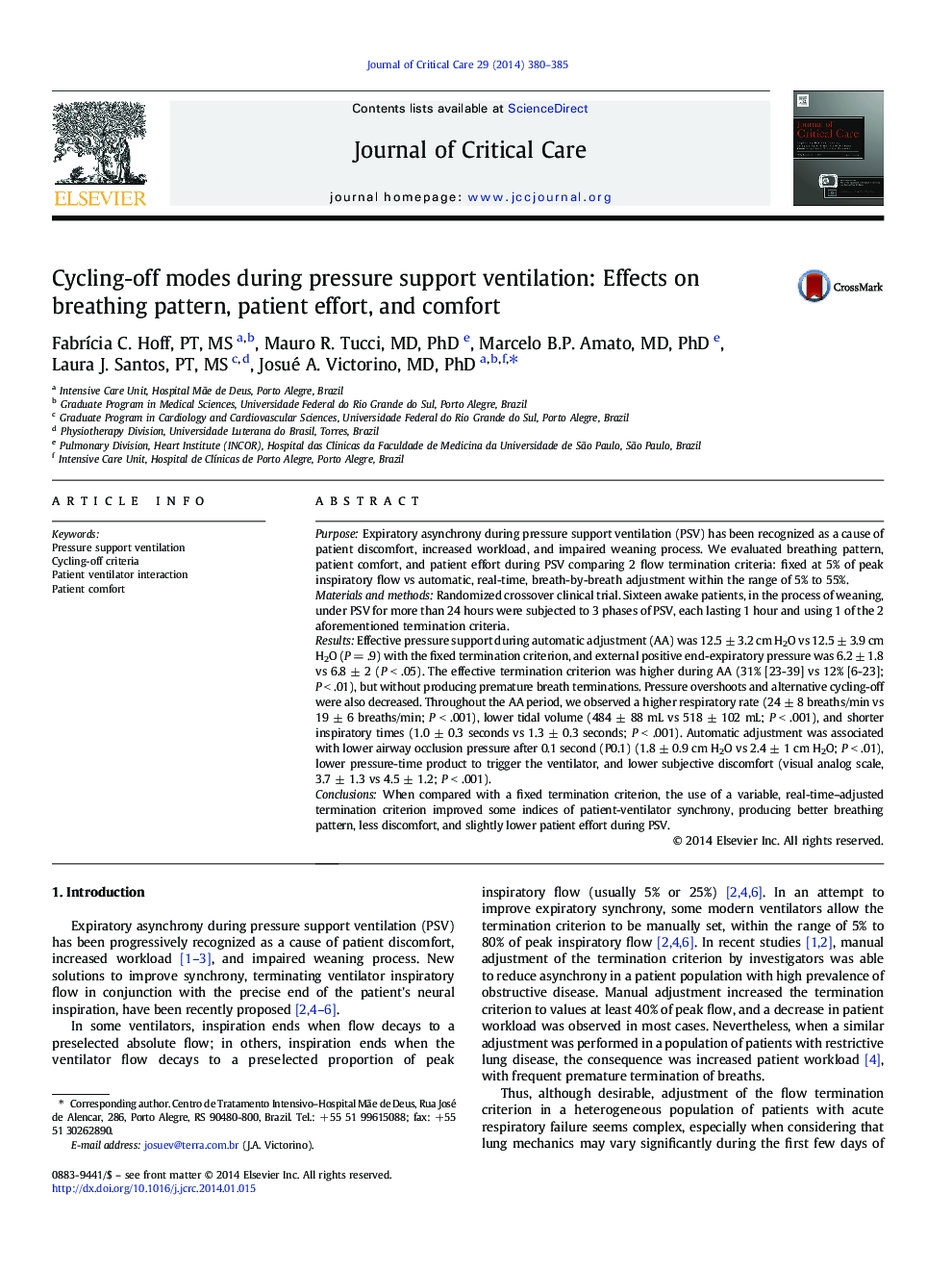| کد مقاله | کد نشریه | سال انتشار | مقاله انگلیسی | نسخه تمام متن |
|---|---|---|---|---|
| 2764782 | 1150938 | 2014 | 6 صفحه PDF | دانلود رایگان |
PurposeExpiratory asynchrony during pressure support ventilation (PSV) has been recognized as a cause of patient discomfort, increased workload, and impaired weaning process. We evaluated breathing pattern, patient comfort, and patient effort during PSV comparing 2 flow termination criteria: fixed at 5% of peak inspiratory flow vs automatic, real-time, breath-by-breath adjustment within the range of 5% to 55%.Materials and methodsRandomized crossover clinical trial. Sixteen awake patients, in the process of weaning, under PSV for more than 24 hours were subjected to 3 phases of PSV, each lasting 1 hour and using 1 of the 2 aforementioned termination criteria.ResultsEffective pressure support during automatic adjustment (AA) was 12.5 ± 3.2 cm H2O vs 12.5 ± 3.9 cm H2O (P = .9) with the fixed termination criterion, and external positive end-expiratory pressure was 6.2 ± 1.8 vs 6.8 ± 2 (P < .05). The effective termination criterion was higher during AA (31% [23-39] vs 12% [6-23]; P < .01), but without producing premature breath terminations. Pressure overshoots and alternative cycling-off were also decreased. Throughout the AA period, we observed a higher respiratory rate (24 ± 8 breaths/min vs 19 ± 6 breaths/min; P < .001), lower tidal volume (484 ± 88 mL vs 518 ± 102 mL; P < .001), and shorter inspiratory times (1.0 ± 0.3 seconds vs 1.3 ± 0.3 seconds; P < .001). Automatic adjustment was associated with lower airway occlusion pressure after 0.1 second (P0.1) (1.8 ± 0.9 cm H2O vs 2.4 ± 1 cm H2O; P < .01), lower pressure-time product to trigger the ventilator, and lower subjective discomfort (visual analog scale, 3.7 ± 1.3 vs 4.5 ± 1.2; P < .001).ConclusionsWhen compared with a fixed termination criterion, the use of a variable, real-time–adjusted termination criterion improved some indices of patient-ventilator synchrony, producing better breathing pattern, less discomfort, and slightly lower patient effort during PSV.
Journal: Journal of Critical Care - Volume 29, Issue 3, June 2014, Pages 380–385
